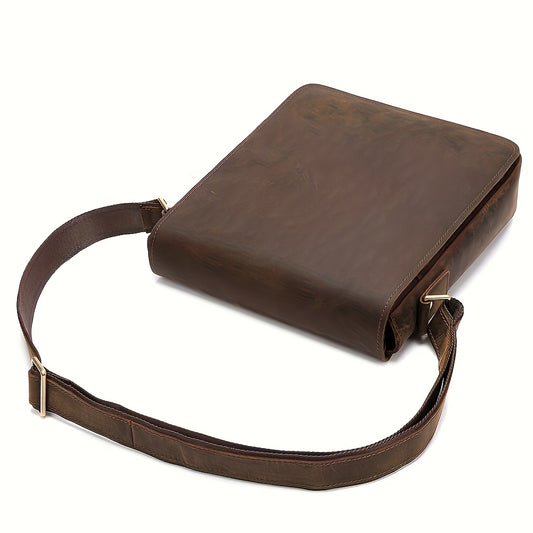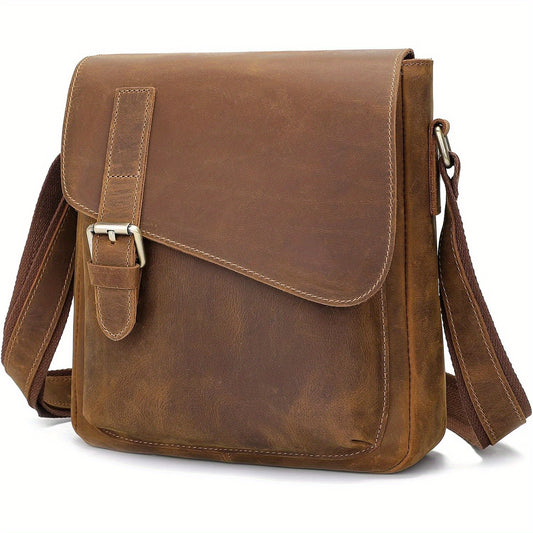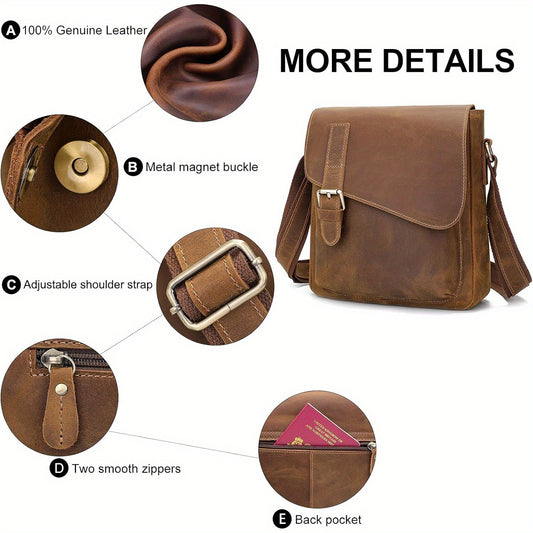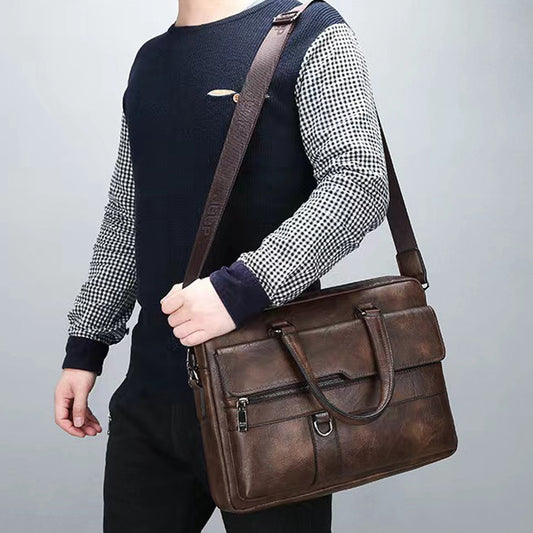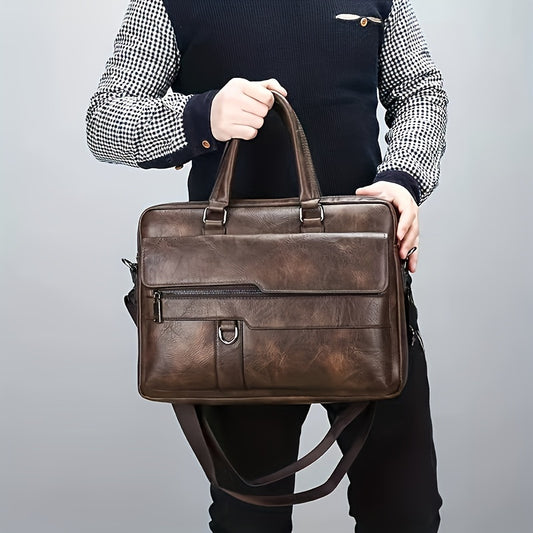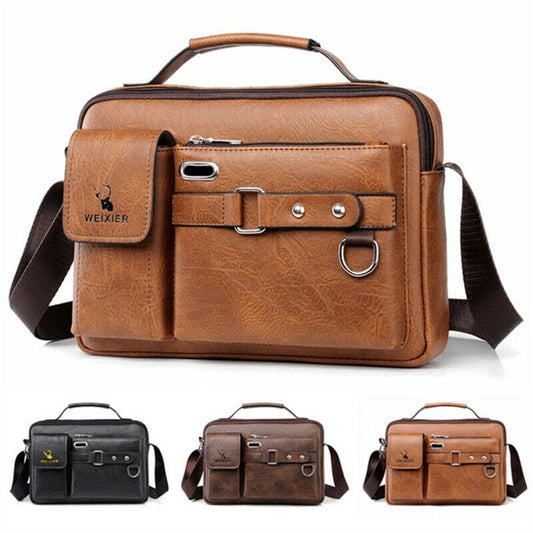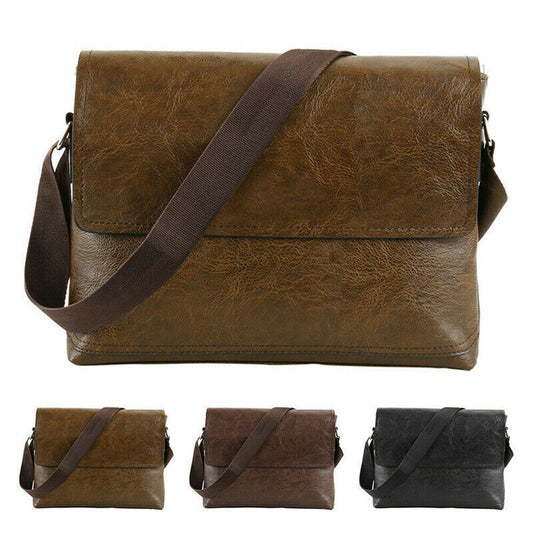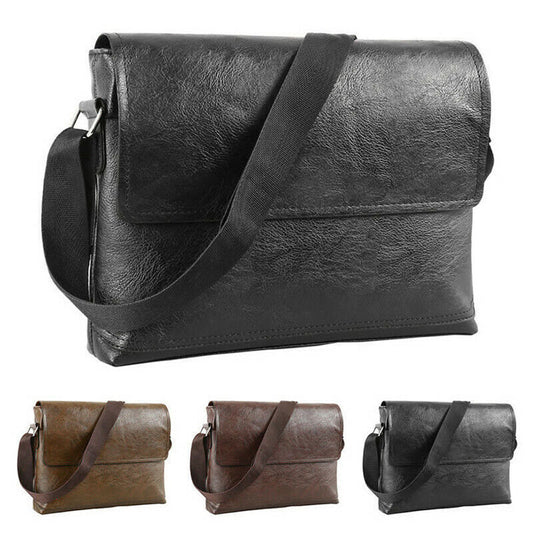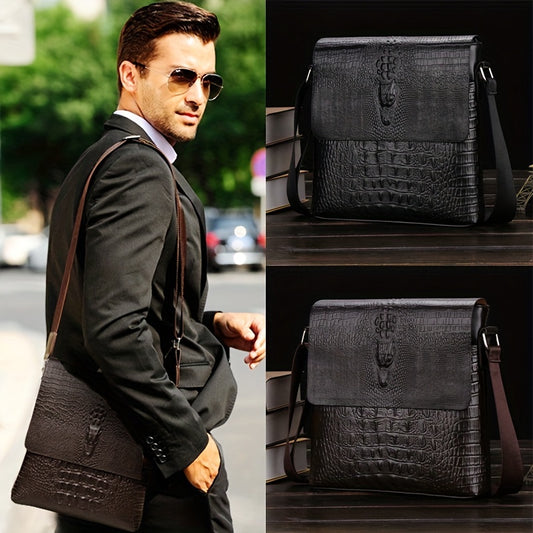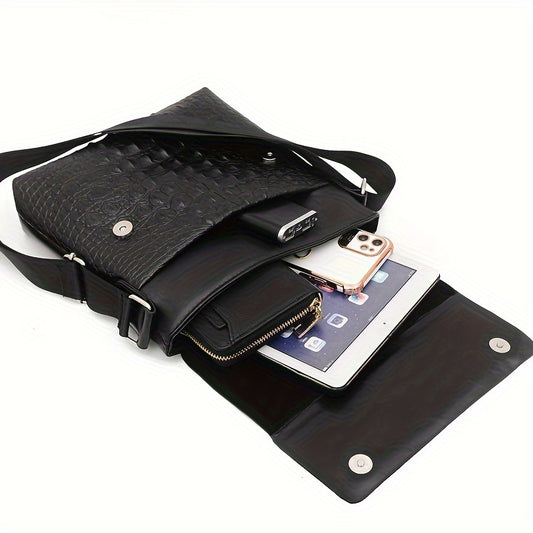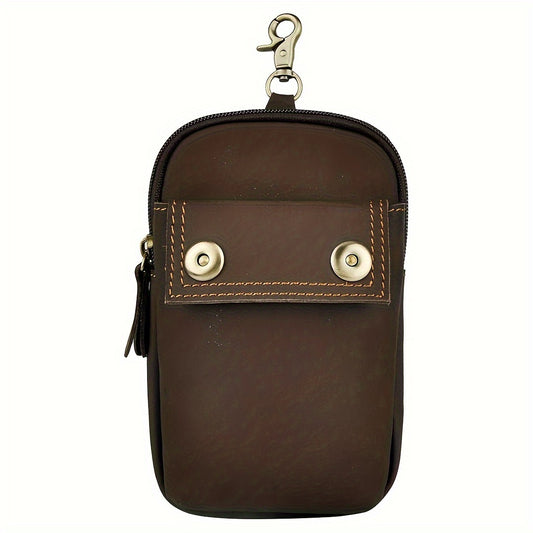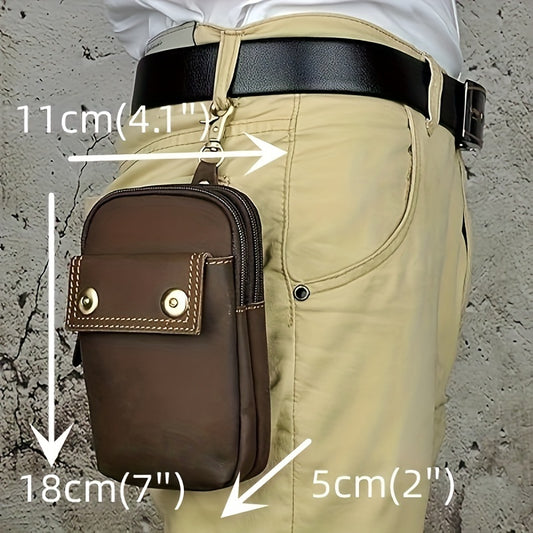About Brown Leather Messenger Bag
Brown Leather Messenger Bag
A brown leather messenger bag represents the meeting point of refined aesthetics and everyday utility. Built on a rectangular silhouette with a protective flap and an adjustable crossbody strap, it organizes modern life without sacrificing style. The warmth of brown leather tempers the formality of business accessories while elevating casual looks, creating an object that serves work, study, and travel with equal ease. When specified correctly—quality hide, thoughtful internal architecture, reliable hardware—this single bag becomes a long-term companion that grows better with time through a natural patina and a memory of journeys made.
Heritage And Evolution
Messenger bags began as hard-working carriers for couriers and postal workers who needed secure, body-hugging storage during long hours of movement. From canvas slings to leather satchels used by telegraph linesmen and bicycle messengers, the format prioritized accessibility and balance. Designers later distilled those utilitarian lessons—wide flaps, quick closures, compartmentalized interiors—into a cosmopolitan essential. Contemporary brown leather versions keep the logic of the original but refine the materials and finish so the bag looks at home with a suit as readily as with denim.
Why Brown Leather Is A Confident Neutral
Brown spans a spectrum from pale tan to bitter chocolate, and that range is why it works across wardrobes. Light cognac highlights texture and grain, mid-browns read approachable and relaxed, and darker tones convey formality without the starkness of black. Brown also pairs intelligently with metals: brass warms it, nickel cools it, and matte black hardware makes it look architectural. Because brown aligns with wood, wool, denim, tweed, and most outerwear, a single messenger bag can anchor a year-round rotation.
Form Follows Function
A messenger succeeds when its structure anticipates daily patterns. The flap shields the main cavity, a slip pocket keeps a travel pass close, a zipped compartment protects a phone, and a padded sleeve steadies a laptop. Side gussets prevent documents from curling; a full-length rear pocket stashes an itinerary; a key leash stops the end-of-day scramble at the door. A good brown leather messenger bag behaves like a tidy desk you can wear—everything visible, everything where it belongs.
Leather Grades And What They Mean
Full-grain leather is the benchmark: the outermost hide with original grain intact, dense fibers, and the best long-term strength. It breaks in, not down, developing a patina that collectors prize. Top-grain is lightly corrected for a smoother face and slightly lighter weight; it is excellent for sleek profiles. Corrected-grain (or coated) hides mask surface variation under pigment, trading nuance for uniformity and stain resistance. Suede and nubuck switch the conversation to feel—plush and tactile but needing more care. Pebbled, pull-up, and Saffiano embosses alter grip and scuff perception without abandoning durability.
Tanning Methods And Their Effects
Vegetable tanning uses plant tannins to stabilize the hide. It yields structured leather that starts firm, softens beautifully, and ages with amber depth—perfect for messengers meant to last a decade. Chrome tanning is faster and produces supple, weather-tolerant leather ideal for flexible flaps and fluid drape. Hybrid processes combine both to balance shape retention and comfort. An informed buyer looks past color to the tannage because it dictates how the bag behaves in heat, humidity, and time.
Stitching, Edges, And Build Quality
Uniform saddle stitching or robust lockstitch with bonded thread hints at overall integrity. Where panels meet, expect skived overlaps so bulk doesn’t bunch. Painted edges should be smooth, level, and free from pinholes; burnished edges should feel like glass. Stress points—strap anchors, flap corners, and the base—deserve bar-tacks, rivets, or hidden reinforcements. A messenger that creaks less, flexes evenly, and stands without sagging telegraphs invisible engineering.
Hardware That Works Quietly
D-rings that rotate prevent twisting; swiveling clasps stop strap torque; spring-loaded closures should click without bite. Zippers with polished teeth glide; pulls must be generous enough for gloved hands. Magnetic snaps save seconds at train gates, but buckles deter pickpockets in crowds—choose based on your route. Feet under the base reduce abrasion in cafés and airports. Good hardware disappears in daily use, which is the highest compliment.
The Ergonomics Of Carry
Crossbody carry spreads weight diagonally, so strap width matters: around 3–4 cm balances loads without cutting into the shoulder. A sliding pad keeps the strap planted; a cotton or suede underside grips even when wearing technical fabrics. Ideal strap drop places the bag between hip and upper thigh; higher for cycling, lower for walking. When packed correctly—heavier items toward the body, tall items vertical—the bag feels lighter than its scale reading suggests.
Internal Architecture For Real Life
Most days require a rhythm: laptop in its sleeve, charger in a zip pocket, notebook in a divider, wallet and passport zipped for security, earbuds and lip balm in a small pouch, and a water bottle upright so condensation doesn’t touch paper. A rear newspaper pocket lets you slip in a document without unveiling the main compartment. Hidden RFID-shielded slots, if present, add peace of mind in busy stations. A brown leather messenger with this micro-architecture turns frantic mornings into predictable starts.
Device Fit Guide
A well-sized messenger should admit a 13–14-inch laptop without distorting the silhouette. For 15-inch devices, look for reinforced bottoms and shaped gussets so corners do not print through the leather. Tablet-only users can choose slimmer profiles that sit closer to the torso, minimizing sway when walking. If you often carry a camera, measure lens height and pick a bag with at least one removable divider to prevent contact marks.
Weather Readiness Without Compromise
Leather and rain can coexist with preparation. Lightly apply a breathable protector to resist splashes; re-apply seasonally. A floating or false bottom creates a safety gap if the bag rests on damp surfaces. A storm flap under the main flap shields the zipper line. If downpours are routine, keep a compact rain cover in the rear pocket—insurance you hope never to claim.
Color, Texture, And Wardrobe Harmony
Brown behaves like a universal translator in outfit building. Chocolate grounds monochrome looks; tobacco lights up indigo denim; mid-brown smooths transitions between navy tailoring and camel outerwear. Texture mixing adds sophistication: pebbled leather next to worsted wool, smooth calf against raw denim, or nubuck with a waxed jacket. The messenger becomes a pivot piece that lets materials talk to each other.
Capsule Wardrobe Contribution
Five foundational pieces—a navy blazer, white shirt, dark denim, brown leather messenger, and clean sneakers or derbies—solve most weekday scenarios. The bag is the constant: it carries the tools that make days work and ties the visual story together. Because it sits in every ensemble photo, it deserves investment attention equal to shoes.
Professional Presence Without Noise
Some bags try too hard; a brown leather messenger does not. Its quiet lines say “prepared” without shouting. Meeting clients, presenting slides, or boarding a flight, the bag reads as composed. Subtle branding or none at all keeps focus on proportion and craft. Under bright office lights, the grain’s natural variation adds human warmth to glass and aluminum environments.
Academic And Creative Use
Lecturers appreciate a flap that forms a makeshift lectern edge. Designers slide A4 pads flat under a divider to keep pages crisp. Musicians stash a tablet, foldable stand, and cables in separate sleeves to avoid tangles. Writers carry a compact keyboard in a side pocket so a café table becomes a studio in seconds. The messenger’s genius lies in being infrastructure for different lives.
Travel Logic And Security
Airports reward organization. Boarding pass in the rear pocket for quick show; passport zipped nearest the body; liquids pouch on top; laptop sleeve with a side unzip so security bins are straightforward. In crowded metros, wear the bag in front, tuck the flap under your forearm, and loop a finger through a puller. A brown leather messenger that opens quickly for inspection but closes confidently restores calm during itineraries.
Long-Term Cost Of Ownership
A synthetic bag may be cheaper at the till but expensive in replacements. Quality leather amortizes differently: conditioning once a season, a new edge-paint after years, perhaps a zipper pull replaced—small care for prolonged service. The cost is not just spread over time; it compounds in pleasure as the appearance deepens and the bag molds to your patterns.
Care Protocol That Works
Dust with a soft brush weekly. If grime accumulates, wipe with a lightly damp cloth, then let the leather dry away from heat. Condition sparingly—think “dry skin” not “soak.” Rotate use to allow fibers to rest. Store stuffed with acid-free paper so panels keep shape; avoid plastic bags that trap moisture. Small rituals now prevent large repairs later.
Patina: A Timeline
Month 1: edges soften and the strap learns your shoulder. Month 6: touch points develop a silkier sheen; the flap darkens subtly. Year 2: fine lines across high-flex areas echo how you reach for the phone or slide a notebook. Year 5 and beyond: the color deepens and tiny scuffs blend into a story only light can fully read. A brown leather messenger bag doesn’t just age; it records.
Repairability And Respect For Materials
Good construction welcomes maintenance: a cobbler can re-stitch a seam, replace a zipper, add new edge paint, or re-rivet a strap anchor. Buying repairable things is a design choice and an environmental stance. When a bag can be renewed, ownership becomes a partnership rather than a countdown.
Choosing The Right Size
Think in volumes, not just dimensions. What is your daily kit: laptop, notebook, charger, pencil case, glasses, phone, keys, wallet, compact umbrella, water bottle? If you routinely carry all, choose a medium messenger with a structured base. If your load changes, pick a design whose gussets expand. If you move by bike, favor slimmer profiles that reduce sway and keep weight close.
Common Mistakes To Avoid
Overloading beyond design intent strains strap anchors and warps panels. Stuffing bottles horizontally risks condensation near electronics. Applying heavy conditioner often darkens leather unevenly. Hanging the bag by its flap pulls stitches out of line; use the handle or strap anchor when hooks are available. Avoid perfume and sanitizer contact—alcohol leaves dull rings.
Ethical And Environmental Considerations
Longevity is sustainability. A messenger built to last displaces a chain of short-lived purchases. When possible, look for supply chain transparency, responsible tanning methods, and fair labor practices. Thoughtful packaging—cloth dust bags and recyclable boxes—reduces waste without ceremony. A brown leather messenger bag that respects materials and makers feels better to carry.
Gifting A Messenger Bag
Because sizing is universal and the utility obvious, a messenger makes a confident gift for graduations, promotions, and milestone birthdays. Add a short note inside the rear pocket so the recipient finds it later, and the object becomes a memory anchor. A monogram on an internal tab keeps personalization discreet and timeless.
Personalization That Ages Well
Monograms, contrast thread on a repair stitch, or a custom strap length matter more than loud logos. The best custom touches make life easier—an extra key leash, a second pen loop, a divider set to your device. Over time those small decisions feel like the bag was designed for you from the start.
Minimalism And Daily Calm
Clutter exhausts cognition. A messenger with just enough compartments encourages editing: one cable, not a tangle; one pen that always writes; one notebook you will finish. The bag becomes a boundary that protects focus rather than a bin that invites chaos.
Outfit Scenarios Across A Week
Monday: navy suit, white shirt, brown derbies, mid-brown messenger—the color harmony reads deliberate. Wednesday: denim, merino crew, Chelsea boots, pebbled chocolate messenger—texture play delivers interest without prints. Friday: chore jacket, chinos, sneakers, tan messenger—off-duty without sloppiness. Saturday flight: technical bomber, black jeans, dark brown messenger—elevated travel uniform.
Regional Weather And Practical Tweaks
Humid coasts benefit from breathable cotton strap undersides and a ventilated back panel. Dry highlands appreciate occasional conditioning to prevent micro-cracks. In four-season cities, removable organizers let the bag slim down in summer or expand in winter when gloves and scarves join the kit. The same messenger adapts if its architecture is considered.
Photography And On-Screen Presence
Cameras love brown leather. It catches light with more nuance than flat synthetics, and the grain breaks reflections for a premium look on video calls. If you present often, placing the messenger in frame—neatly closed, not cluttered—adds texture that suggests order without distraction.
Signals Of Authenticity
Even stitches, clean cut lines, firm but not brittle hand-feel, a leather smell that is warm not chemical, hardware that operates without hesitation—authentic quality announces itself quietly. Grain that varies naturally and edges that are finished cleanly indicate attention, not shortcuts.
The Role Of A Messenger In A Career Arc
First job: the messenger carries interview notes and a modest laptop. Mid-career: it holds a longer charger, a second phone, and a thin portfolio. Later: meetings compress, travel increases, and the bag becomes a trusted constant. A brown leather messenger bag bookmarks phases without becoming outgrown.
Confidence Built On Readiness
Confidence isn’t loud; it is prepared. A bag that yields the right item in one motion—business card, boarding pass, notebook page—makes you look like someone who respects time, including your own. That impression compounds into trust.
Price, Value, And Perspective
Comparing only price obscures the calculus. Materials, design, and serviceability determine life span. Four inexpensive bags over eight years often exceed the cost of one well-made messenger that still looks better at the end. Value is durability multiplied by satisfaction.
Where A Messenger Excels Over Other Formats
Versus a backpack, a messenger grants instant access while standing. Versus a briefcase, it frees hands and distributes weight across the torso. Versus a tote, it protects contents under a flap and hugs tight on transport. Each format has a place; the messenger covers the most bases for urban movement.
Why Texture Matters In Brown
Smooth calfskin reads sleek; pebbled hides shrug off scuffs; pull-up leather blushes at bends and returns as the oils migrate—small theatrics that make carrying the bag a tactile experience. Choose based on tolerance for marks: people who love patina might prefer pull-up; those who want stealth durability choose pebbled.
Quiet Branding And Lasting Relevance
Minimal external marks mean the design—not a logo—must carry the look. That restraint ages better, avoids clashing with attire, and keeps the bag appropriate in conservative settings. The story becomes proportions, materials, and craft, not a season.
A Note On Weight
Leather density, lining choice, and hardware determine starting weight. A lighter bag feels luxurious at the store; a slightly heavier one may resist deformation when fully loaded. Try the bag packed if possible. Objective weight matters less than balance in motion.
Building A Two-Bag System
Some users thrive with a messenger plus a compact sling. The messenger carries laptop and documents; the sling holds phone, keys, and earbuds for quick errands. Offload to the sling for lunch, return essentials to the messenger for meetings. The pair keeps both bags tidy and light.
Subtle Security Practices
In crowds, carry the flap toward the body; when seated, loop the strap around a chair leg; in cafés, place the bag between your feet rather than behind you. None of this announces worry. It signals care.
When Leather Meets Technology
Felt or microfiber laptop sleeves reduce scratch risk; a cable roll prevents dents; a slim power bank eliminates emergency outlet hunting. Analog and digital coexist peacefully when each has a defined home inside the bag.
Emotional Longevity
Objects carried daily gather meaning. A crease by the pen loop from a promotion, a slightly darker flap from rainy commutes, a corner softened by travel—all become a private diary. That is why brown leather messenger bags remain beloved: they participate in a life, not just accessorize it.
Choosing With Intention
Ask three questions: Does the size match my real kit? Does the architecture suit my routine? Do I like the leather enough to watch it age? If the answer is “yes” three times, the bag will be used, maintained, and admired—exactly the path to value.
The Role Of Service And Support
Brands that back their work with repair options, spare parts, and straightforward guidance extend product life and confidence. Access to a new strap, a fresh buckle, or edge-paint touch-ups makes a good messenger a great investment.
Why This Category Endures
Silhouette, balance, ease, and beauty—few products solve so many everyday issues so elegantly. The brown leather messenger bag endures because it respects movement, protects essentials, and complements style without competing with it. That is a rare trinity in design.
A Brief Word On Sizing For Different Heights
Shorter frames may prefer bags with reduced vertical depth to avoid thigh bump while walking; taller frames often enjoy slightly longer drops for easy reach. Adjustable ranges that cover at least 20 cm of variance fit more bodies well and adapt to seasonal layers.
Edge Cases And Special Roles
Photographers add padded inserts; consultants carry collapsible clickers and international adapters; architects slip in sample decks. Because the format is simple and the material resilient, customization is easy and reversible.
Summing Up The Promise
What you want from a messenger is composure: a place for everything, a body that sits close without fuss, and leather that will still look dignified after scrapes and schedules. In brown, the promise is amplified—the color makes the craft legible and the patina beautiful.
Fabulive’s Perspective On Craft
Fabulive’s approach to messenger design starts with the inside: measured sleeves, balanced gussets, and stress-tested anchors; then the outside: grain that shows character, hardware finished to glide, edges sealed to last. The goal is not trend but tenure—bags that serve and improve.
Fabulive Materials And Finishing
Fabulive selects hides for density and even fiber, not just surface beauty, then pairs them with linings that resist abrasion. Edge finishing receives multiple coats for resilience; strap pads distribute load across hours. Sub-assemblies are tested as units so real-world use feels effortless.
Fabulive’s Fit For Modern Routines
Whether commuting on foot, cycling short distances, or boarding flights, Fabulive’s messenger proportions avoid swing, the flaps close one-handed, and interior walls hold shape under pressure. The result is a “quiet carry”—organized, calm, and professional.
Aftercare The Fabulive Way
Fabulive’s guidance favors light, regular care: brush, wipe, air-dry, condition sparingly, and store structured. Parts are designed for replacement when wear finally appears, extending the life of the whole.
Why Buyers Choose Fabulive
Customers who choose Fabulive often want two things: a bag that will behave predictably under load and a surface that will age attractively rather than flake or fade. Delivering both requires restraint in finishing and generosity in reinforcement—an ethos built into every panel.
Fabulive’s Quiet Design Language
Logos remain discreet; proportions and grain do the talking. The aim is to harmonize with wardrobes rather than dominate them, so the bag is welcome in boardrooms, studios, campuses, and terminals alike.
Customer Reviews
• Michael R., USA – Substantial leather, steady strap, and a calm interior layout that makes airport security painless. ⭐
• Layla H., UK – Elegant without shouting for attention; the color works with everything from tweed coats to trench rainwear. ⭐
• Ahmed S., UAE – Organized in a way that makes sense for travel—passport and boarding pass always exactly where I expect them. ⭐
• Clara G., Germany – Carries a 14-inch laptop and a heavy textbook yet stays balanced on the shoulder during city walks. ⭐
• Isabella T., Italy – The grain is beautiful and the stitching lines are clean; it reads refined even after weeks of use. ⭐
• Hannah P., Canada – Slim enough for the train, roomy enough for my day; the strap padding really does remove pressure points. ⭐
• Olivia M., France – I appreciate the quiet hardware; zips glide without the metallic rattle that cheap bags make. ⭐
• George K., Australia – Survived a rainy commute with no dye transfer and dried back to its original texture overnight. ⭐
• Madison J., USA – I’ve finally stopped swapping bags; this one suits both client meetings and weekends with the family. ⭐
• Noor A., Saudi Arabia – Strong, discreet, and aging handsomely—the patina already tells a story after a few months. ⭐

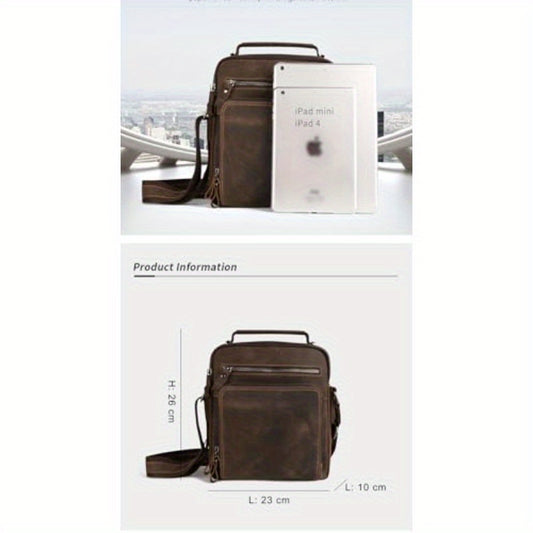
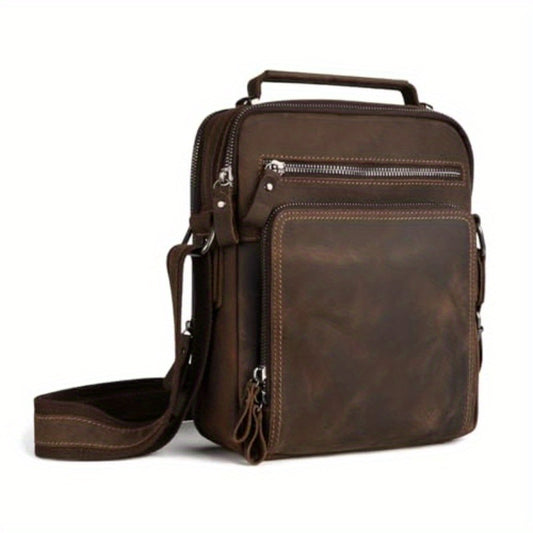
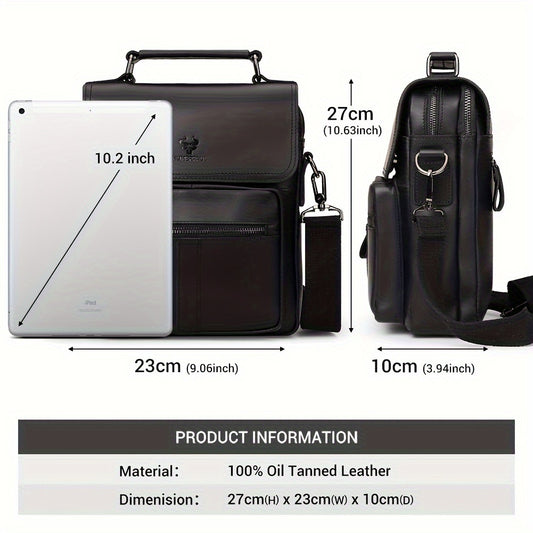
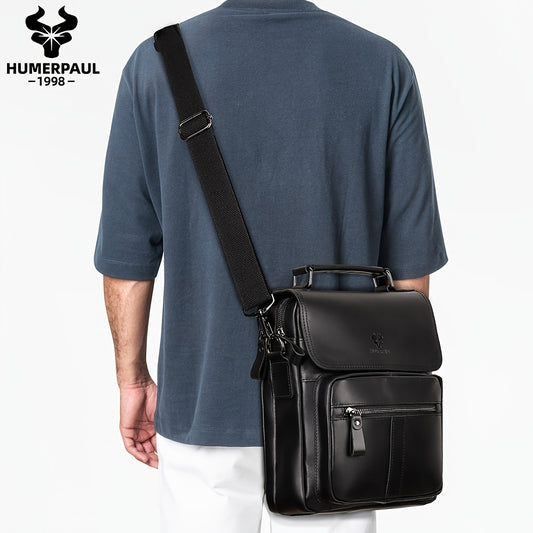

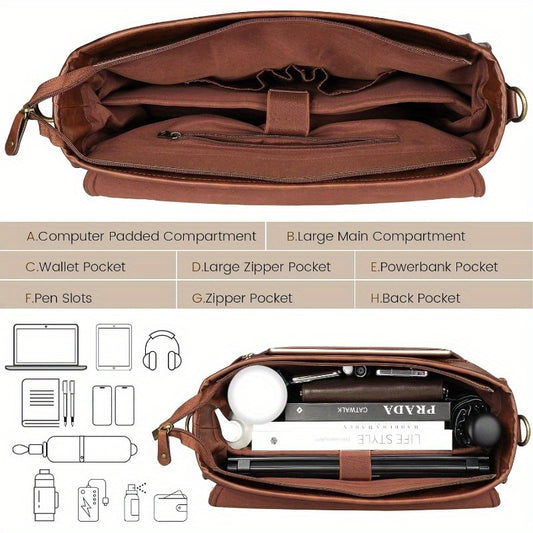
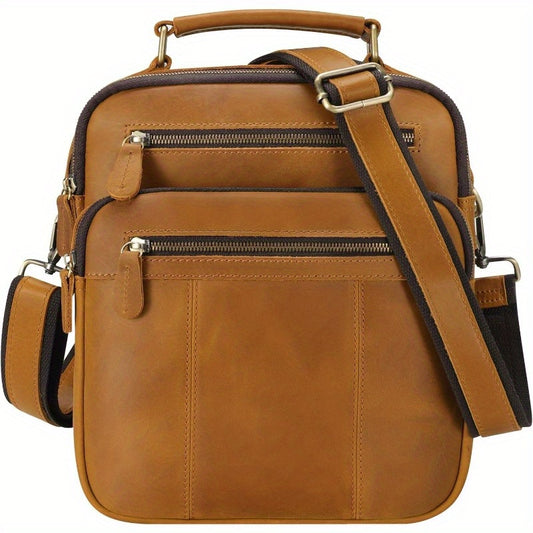
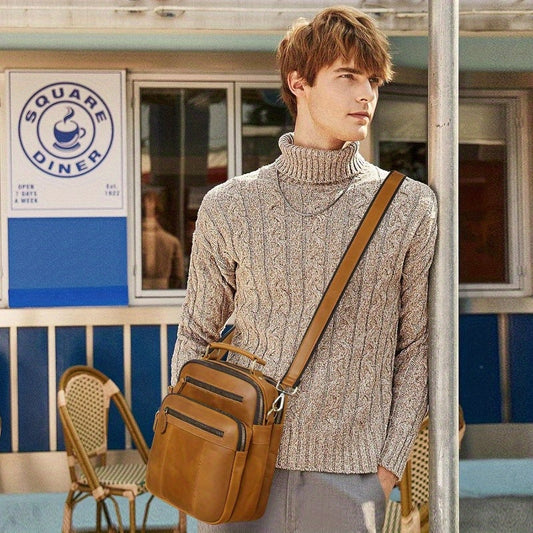
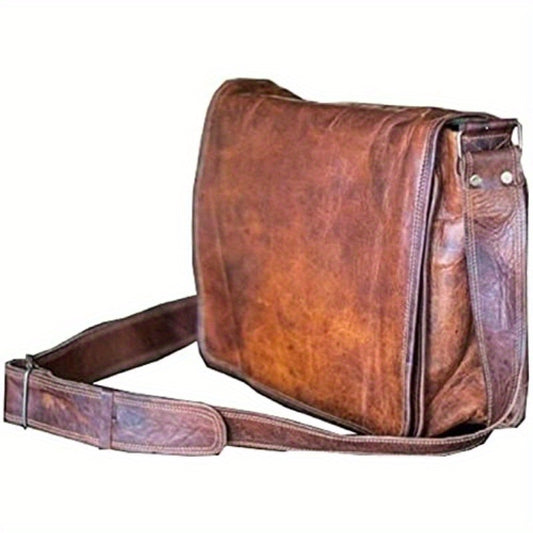
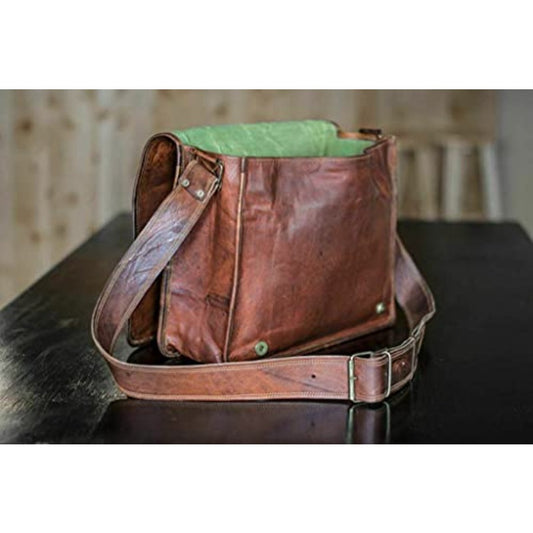
![[Vintage Leather Bags] Vintage Leather Men Shoulder Bags, Crazy Horse Leather Crossbody Messenger Bags With More Inner Pockets | For 9.7inch Tablet](http://www.fabulive.com/cdn/shop/files/3d6fe417-33c1-4c70-8a25-85449d07170b.jpg?v=1751475654&width=533)
